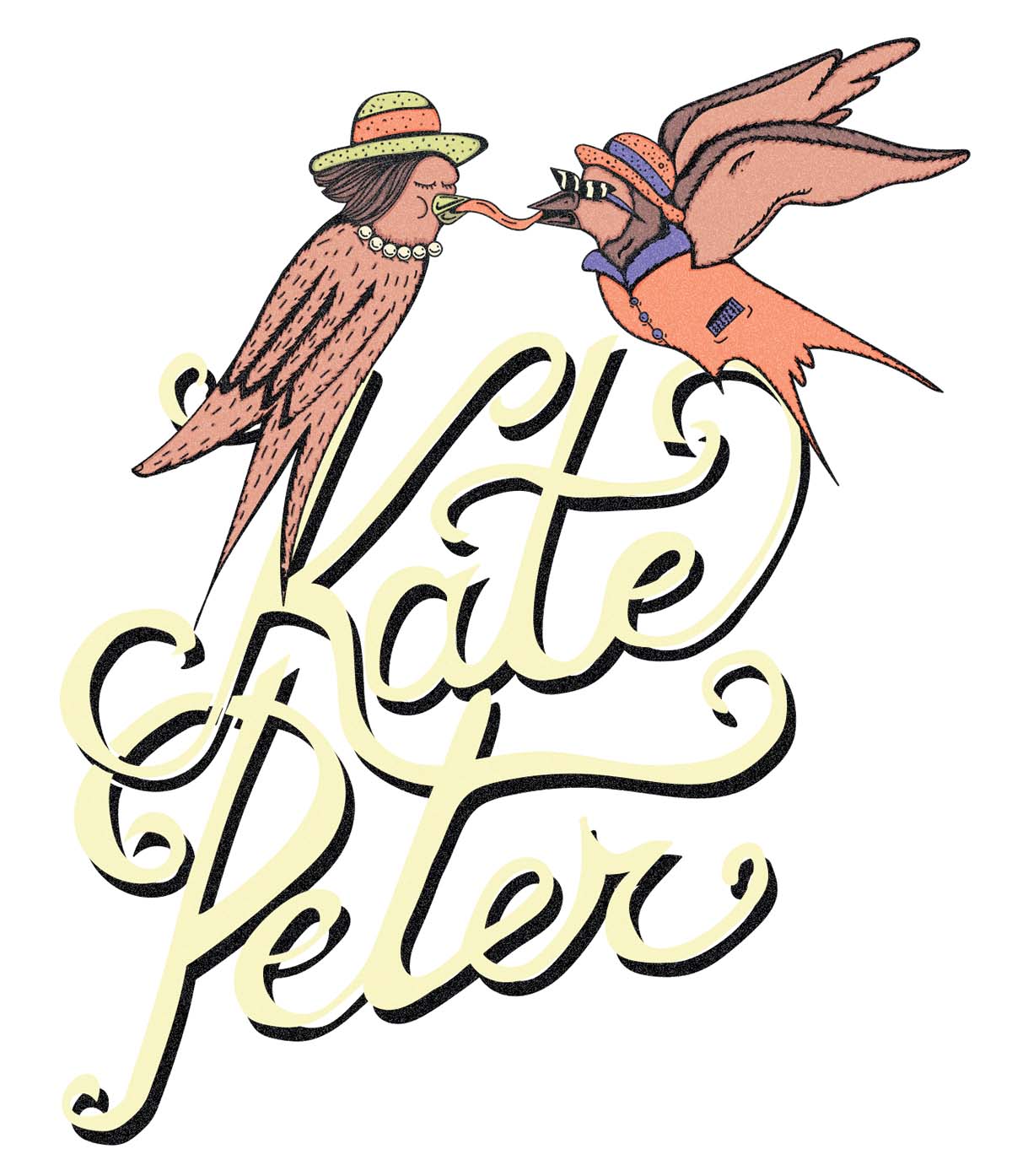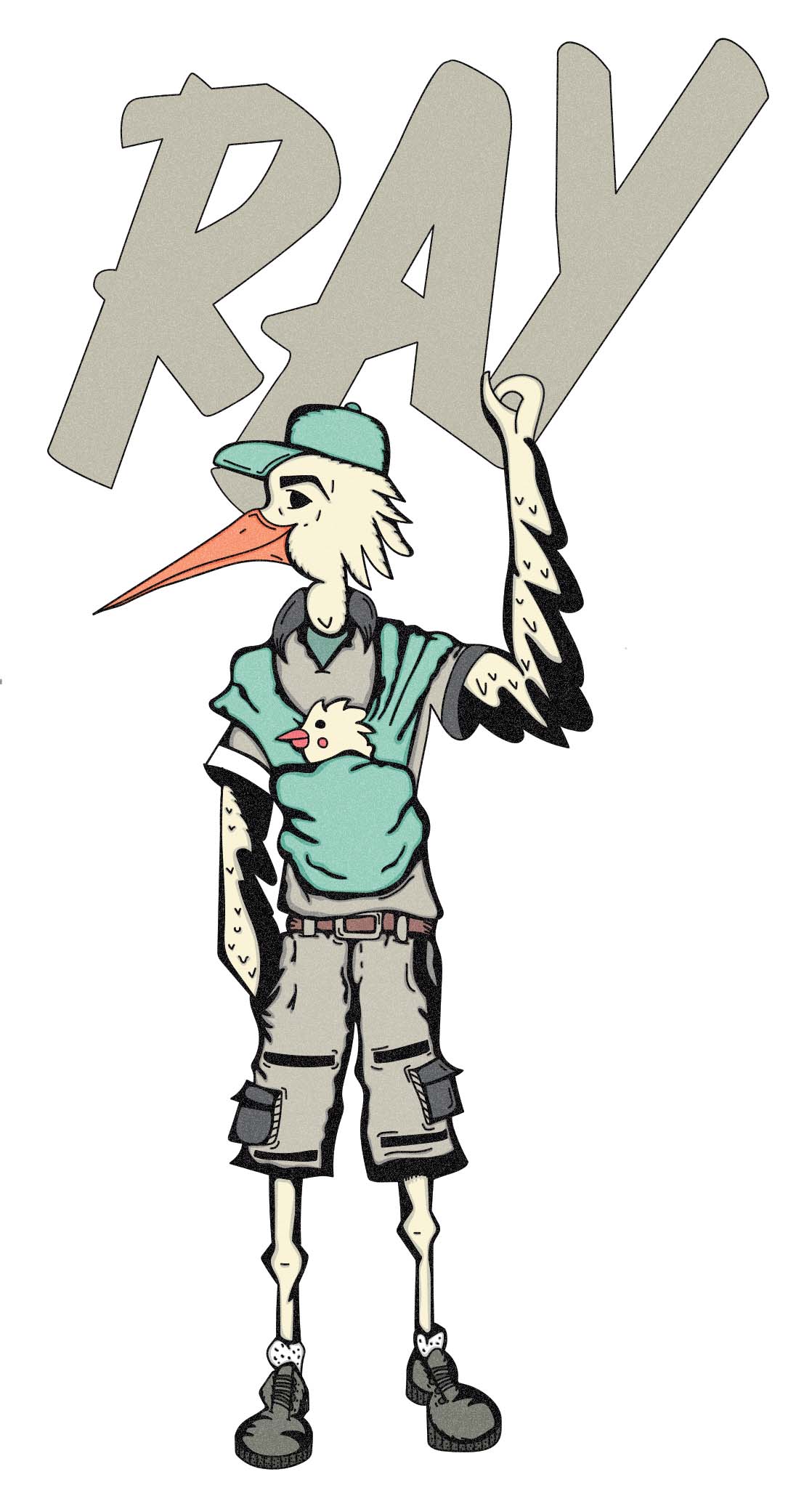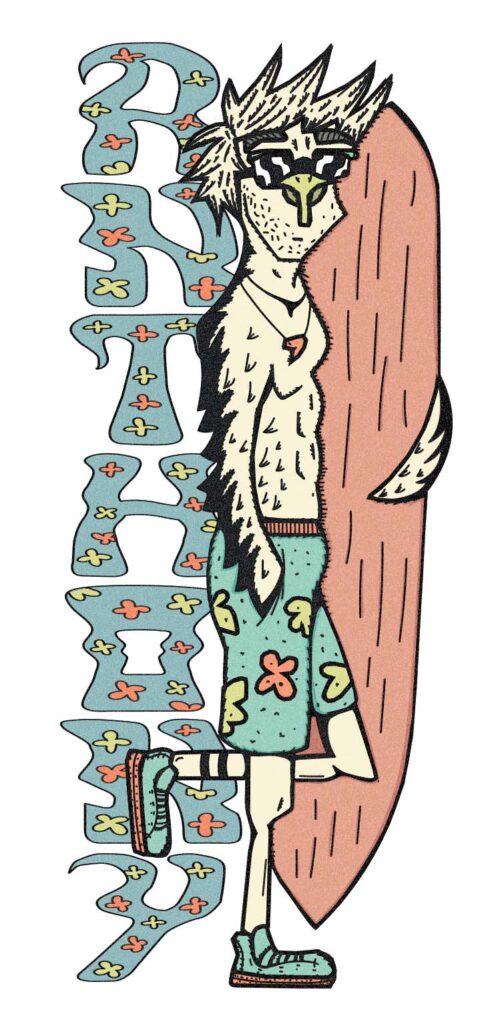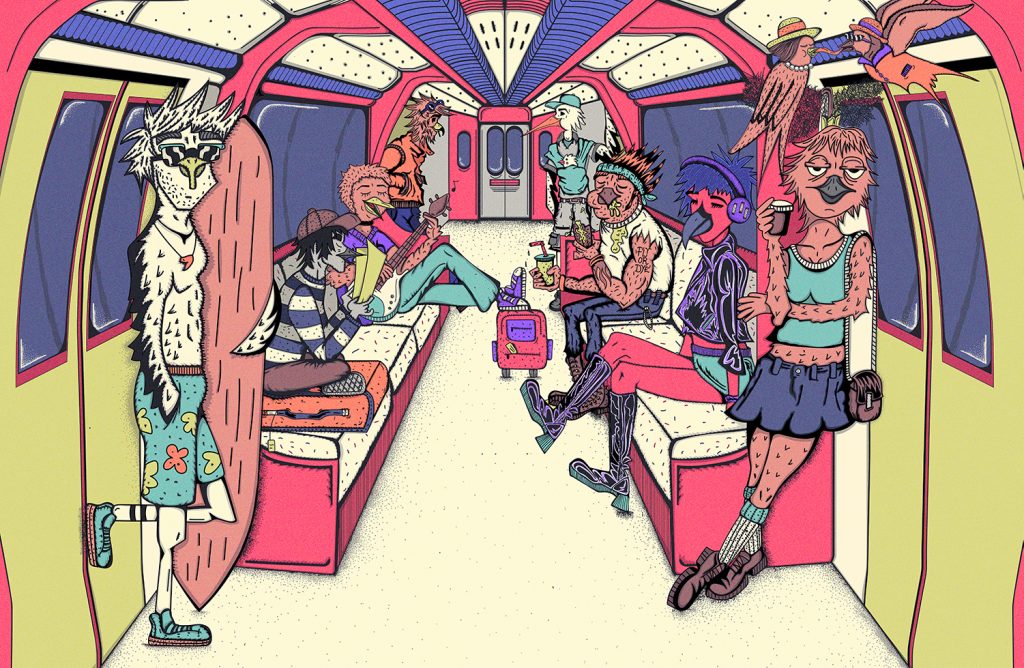Long live the pioneers
Rebels and mutineers
Go forth and have no fear
Come close and lend an ear”
– X-Ambassadors, Renegades
Some ornithologists think that there is no bird that does not migrate. From the local trips of blackbirds, to the circum-oceanic travels of Arctic terns, a bird has a habitat far more extensive than the space it physically occupies or assiduously frequents. However, a bird habitat is naturally fragmented, constantly changing and openly shared. Many species and many individuals of the same species alternate in a regime of near non-belligerence. If there are territorial clashes, they are usually negotiated based on standardized rituals that limit the use of violence. In contrast, humans tend to disproportionately expand their physical and symbolic means of dominance, often resulting in violent confrontations. The post-neolithic attachment to the symbolic meaning of one’s own land can generate a short-circuit whereby the homeland becomes irreplaceable. Strangely enough, this happened in the name of the very culture that has allowed us to discover how our past is essentially a history of incessant migrations.

If we had a cabin in the Italian Po Delta, Fonte:Po Fonte:Rem where we could spend our Sunday evenings contemplating the sunset – as happens in the best romantic films – we would have an intimate experience of the passage of the great flocks of migratory birds during the seasons of great transit. But it would take just a little more attention to trace even the less obvious movements of the feathered neighbors throughout the year: recurring but never stable presences, like the tide that comes and goes at its own pace. From one year to the next, in spring, the same great tree fills up with the nests of the grey heron (Ardea cinerea) at the top, and of the little egret (Egretta garzetta) on the lower branches; the banks of the canal are dotted with the floating nests of the great crested grebe (Podiceps cristatus), and the cormorants (Phalacrocorax carbo) occupy their favorite perches on the wooden poles driven into the lagoon. In winter, the same tenants roam, more solitary and scattered, in the wetlands hunting for the remaining insects and fish, despite the cold weather. The summer season, however, is also teeming with guests who have come from the south to nest, such as the night heron (Nycticorax nycticorax), which populates the evenings with its resounding quack; the common tern (Sterna hirundo), which builds its nest on stony shores and flies with the precise grace of an arrow; and the glossy ibis (Plegadis falcinellus), with its beak like the god Thoth and its splendid iridescent black, enamel-like plumage. In winter, on the other hand, a few black-eyed godwits (Bucephala clangula) and snipes (Gallinago gallinago) from northern Europe escape from the frost into the mild waters of the Adriatic lagoon. Everything runs smoothly, without clamour, marches or wars. At most a few brawls, demonstrations of strength and display of wonderful feathers as a sign of strength and power. The best hunting and nesting territories go to the dominant (older, experienced, or energetic) pairs, and subordinate individuals are more likely to struggle to reproduce or survive because of their suboptimal territory, rather than aggressive clashes with other competitors.

Fighting for resources would be extremely costly, so their territoriality is based on continuous, low-intensity fighting, and on negotiations based on standardized rituals Fonte:Mayntz that include signals of aggression such as flight maneuvers, feather swelling and low vocalizations. Fonte:Ak Egrets, for example, divide up their hunting territory with simple size-based displays: they parade parallel back and forth along the stretch of land where they’ve met, looking each other in the eye and raising each other up, feathers included, to assess each other’s physical strength, health, and readiness to fight. The one who has the highest combination of bravery and strength wins: it’s almost never necessary to get serious. More aggressive are the moorhens, Fonte:Petreri that go so far to pounce on each other in the water to determine who will be the dominant male that will form the breeding pair with the female. Birds of prey get hurt more, because they have hooked beaks and sharp claws, but they rarely suffer fatal wounds after a collision in flight, an event that is quite rare. The point is to intimidate, not to kill: all these ritual gestures limit a lot the abuse of violence and blood fights. Moreover, many-to-one fights are limited to mobbing by smaller individuals against lone predators – a sort of alliance against a common threat. Birds seem to have evolved so that when competition gets tough, they seek their ecological niche elsewhere rather than on the contested terrain, Fonte:Tarjuelo following the logic: live and let live.

QThis aspect of birds’ social life has closely co-evolved with their aptitude for movement and migration: the vast majority of birds are always moving. Fonte:Peter Fonte:Newton The blackbird (Turdus merula) moves a few kilometers each day to feed, carefully scouring a handful of meadows and bushes around its evening roost, and stopping occasionally at a fountain or stream for water. These daily commuting movements are usually short and localized, but can also extend for hundreds of miles if they are seabirds that hunt offshore, such as albatrosses. In addition, young individuals, at the end of the breeding season, move away from where they were born to find new territories in which to settle. This “one-way” dispersal usually does not take place over huge distances, because its purpose is to not create competition between the new generation and the previous ones, as is the case with the yearling blackcaps (Sylvia atricapilla) that begin migrating first to wintering quarters in the fall.

The migration we usually have in mind, however, is a seasonal commuting movement of huge masses of birds in which there is an outward journey to certain locations – wintering quarters – and a return journey to breeding sites. Up to 5 billion birds Fonte:Dokter depart every year from North America to the South, and similarly more than 5 billion from Eurasia reach Africa in winter. In total, at least 50 billion birds migrate worldwide out of 200-400 billion. Such large scale movements take place during the same period every year, the journey is either medium-long, long or very long, and it usually follows well-defined routes. The main reason for migration is the same that drives the shepherds during the traditional transhumance to meet the needs of livestock: the variation during the year of the availability of food. Typical migrants in Italy are swallows (Hirundo rustica), bee-eaters (Merops apiaster), nightingales (Luscinia megarhynchos), white storks (Ciconia ciconia), and golden plovers (Pluvialis apricaria). The longest migration among birds is that of the Long-tailed Tern (Sterna paradisaea), which reaches 60,000 km per year: it nests in Iceland and Greenland, but winters in South Africa and Antarctica.

These orderly and rhythmic wave-like movements are the opposite of irruptions and invasions, which consist of extraordinary and unpredictable expansions or relocations of bird populations, usually caused by anomalous food shortages or extreme meteorological events. The bramblings (Fringilla montifringilla) and the oystercatchers (Bombycilla garrulus) in winter invade North-Eastern Europe in search of beechnuts and rowanberries: the reasons for these irruptions are similar to those of human migrations, high population density and scarcity of food. Nomadism however is not so uncommon. Exactly how some nomadic tribes (the Maoris of the Archaic Age, the Native Americans or the Tuareg) have a flexible relationship with the territory, the same is true for some birds. Crossbills (Loxia curvirostra), for example, continuously chase pine nuts over vast areas, and in doing so they cover the entire extent of the alpine coniferous forests and taiga of the Northern Hemisphere.

Never still
Most birds practice one or two of these forms of recurrent movement, the intensity of which varies among different groups in the same species – that is, in technical jargon, from population to population. But how come birds never stay still? There are many hypotheses, but the most accredited is that ancient birds had adapted to the variability of environmental conditions by developing partial migration, and that behavior is now fixed in the genome of modern birds. Still today, in fact, partial migration is by far the most widespread and has a strong microevolutionary potential, i.e. it is a sort of turntable from which, depending on environmental pressures, larger or smaller parts of the population can be selected as migratory birds. The conditions that from time to time lead the different species of birds to adopt a regime that is more migratory than sedentary consist in the selective pressure operated by various factors, such as seasonality, competition, predation and escape from disease, similar to what happened during human evolution with the various migratory waves out of Africa.
After his exit from Africa, Homo sapiens colonized the whole world in a very short time, modifying the environment and building its ecological niche. Birds, on the other hand, did not drastically affect their environment during evolution, but followed the reverse evolutionary strategy: they developed great flexibility and resilience to environmental perturbations by adopting a migratory attitude. Savannah buzzards (Heterospizias meridionalis), urubitingas (Urubitinga urubitinga), karakaras (Polyborus plancus), collared vultures (Cathartes aura), and collared swifts (Cypseloides zonaris) are called fire chaperones because they follow the fire front during South American savanna fires at the end of the dry season and feed on animals fleeing the flames. Birds that feed on nectar, fruits or seeds, on the other hand, follow the blooming season; seabirds flee ice, while migrant birds typically flee snow or bad weather, shortages or drought. Swifts (Apus apus), which are absolute masters of flight, flee from bad weather by remaining in the air, that is, by performing circular flights that circumvent the most violent part of storms or entire areas of atmospheric depression, remaining away from their nests for days or weeks at a time, while their young become numb in order to resist fasting.

Migration, War, Dominance
Although the reasons for migration are similar among different animals, the outcomes of such a move are radically different depending on the ecology of the species. We humans have always moved around the Earth in search of new territories and new resources, but we have never universally adapted to non-sedentary living over periods of time shorter than the average lifespan, unlike birds who have made mobility their rule of life. Moreover, it is quite common for us to get aggressive for reasons other than life and death, especially if many people are lashing out at one another (scapegoating mechanism Fonte:Girard) or if the sides confronting each other compete for the same resources or territory (armed wars). In addition, the symbolic dimension of the human being often associates precise meanings to certain places, making them irreplaceable. Fonte:Treccani The Israeli-Palestinian war is a conflict that stems from the cultural dimension of irreplaceability of the homeland, a product of the cultural change that began with the Neolithic transition and the shift from nomadic flexibility to sedentariness.

Was it agriculture however that made men territorial and aggressive? An exemplary case is that of the encounter between the Maori, a people of warlike farmers, and the Moriori, a people of hunter-gatherers, which occurred in 1835 in the Chatham Islands, east of New Zealand. Fonte:Jared The Moriori had resided on these islands for about three centuries. During this time they had gone from being farmers to being hunters, mainly because the harshness of the climate did not allow agriculture. They culturally abolished war, seen as a useless waste of energy in a hostile environment, and disputes were resolved through purely ritualistic fights and negotiations. The Maoris arrived on the Chatham Islands on a European ship engaged in trade and invaded the territory. The Moriori, according to their tradition, tried a peaceful division of resources, but the Maoris did not even respond: they exterminated the entire population except for a few survivors, enslaved. It therefore seems that an important factor to catalyze war and homicidal violence is the security of one’s resources. The awareness of one’s technical superiority and the typical human sociality, thanks to which we create alliances and communities that allow us to survive, also push us to conquer and subdue by force. In fact, individual violence is widespread among mammals and can be heinous, but it seems to be typical of humans (as well as very ancient, being the execution of collective massacres documented even before the Neolithic transition). Dominance, rather than defense, seems therefore associated in humans with the expansion of resources, whether real or symbolic.

However, could the same culture and symbolic capacity that made us territorial and violent be a container and a limit to the worst manifestations of human nature? We have learned from birds how to design efficient flying machines, who knows we might also learn from them how to live together by migrating and avoiding wars.
